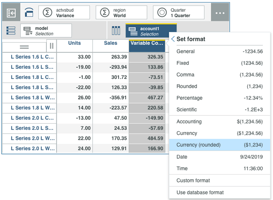Important Notice for All IBM Cognos TM1 Users: There is a possibility that your TM1 system may stop...
4 Reasons Why Financial Planning & Analysis Is Not Effective
Considering how important the Financial Planning and Analysis (FP&A) function is in providing critical business insight to company CFOs and CEOs, it is surprising how low its capabilities are still regarded amongst business executives. According to a recent study published by APQC, only 40% of 130 executives surveyed described the FP&A function as effective. Given all the talk and focus in the industry on business analytics and insight, as well as the availability of numerous systems and solutions from niche players and mainstream vendors, it is surprising that the FP&A function is still rated this low. Based on our observation and experience, there are four primary factors that drive this outcome:
1. Continuously raising the bar on expectations
The demand for meaningful business insight and analysis has been growing continually over the past years. Economic uncertainty, regulatory scrutiny, increasing competition, changing weather patterns or geopolitical pressures keep creating new and more urgent demand for information that FP&A needs to satisfy. Even as the FP&A capabilities, processes and technology improve, the FP&A groups are under increasing pressure to respond to more and more ad-hoc requests from many different groups and stakeholders. As a result, they spend most of their time scrambling to respond to requests under rapid fire and often do not have the ability to step back and develop capabilities that would bring them to the next level. What was working well yesterday is not good enough today.
2. Playing catch-up with technology
Today’s finance and planning infrastructure is typically complex as a result of aggressive growth and multiple mergers and acquisitions. Often times the reporting and analytics relies on information from multiple legacy or department level systems. Excel typically plays a significant role in arriving at the end product. To further complicate matters, the demand for business driver detail and modeling require information residing in transactional systems that are outside finance. Even though companies continue to invest and integrate the various systems, ongoing business evolution continues to fuel more changes at a rapid pace, thus creating a moving target. As a result, Finance spends most time pulling information together from various systems and compiling reports or explaining variances at a high level (vs budget) rather than analyzing data and providing value add insight.
3. Slowly adopting advanced planning techniques
Majority of companies still rely on a fairly static process for budgeting, forecasting and reporting. While some of the advanced techniques such as rolling forecast or driver based planning are slowly creeping in, they are not the prevailing methodology yet. It is not uncommon for a large organization to spend 6 months preparing the annual budget and for the budget to be obsolete shortly after it has been completed. Forecast is often times the result of a finance process (YTD Actuals plus Budget) and includes little real time insight from the business. Reporting tends to be backward looking, focused on results to-date and explaining variances to plan or forecast. As such, financial planning is not sufficiently flexible and aligned with business strategy and is slow to adapt and accommodate changes in business conditions.
4. Advanced Analytics still in early stages
While predictive analytics, demand planning and other capabilities are all the buzz these days, they are at a very early stage of adoption. Even if they exist, they are typically not integrated with the overall financial performance management framework. They are usually performed by a dedicated group of people, many times statisticians or other similar functions, in isolation and focused on a specific area / problem. The result is then used as an input into the planning process for further processing. Tremendous upside exists in integrating the forward looking capabilities into financial planning from both systems and procedural perspective, however it will take some time until this practice becomes mainstream.



